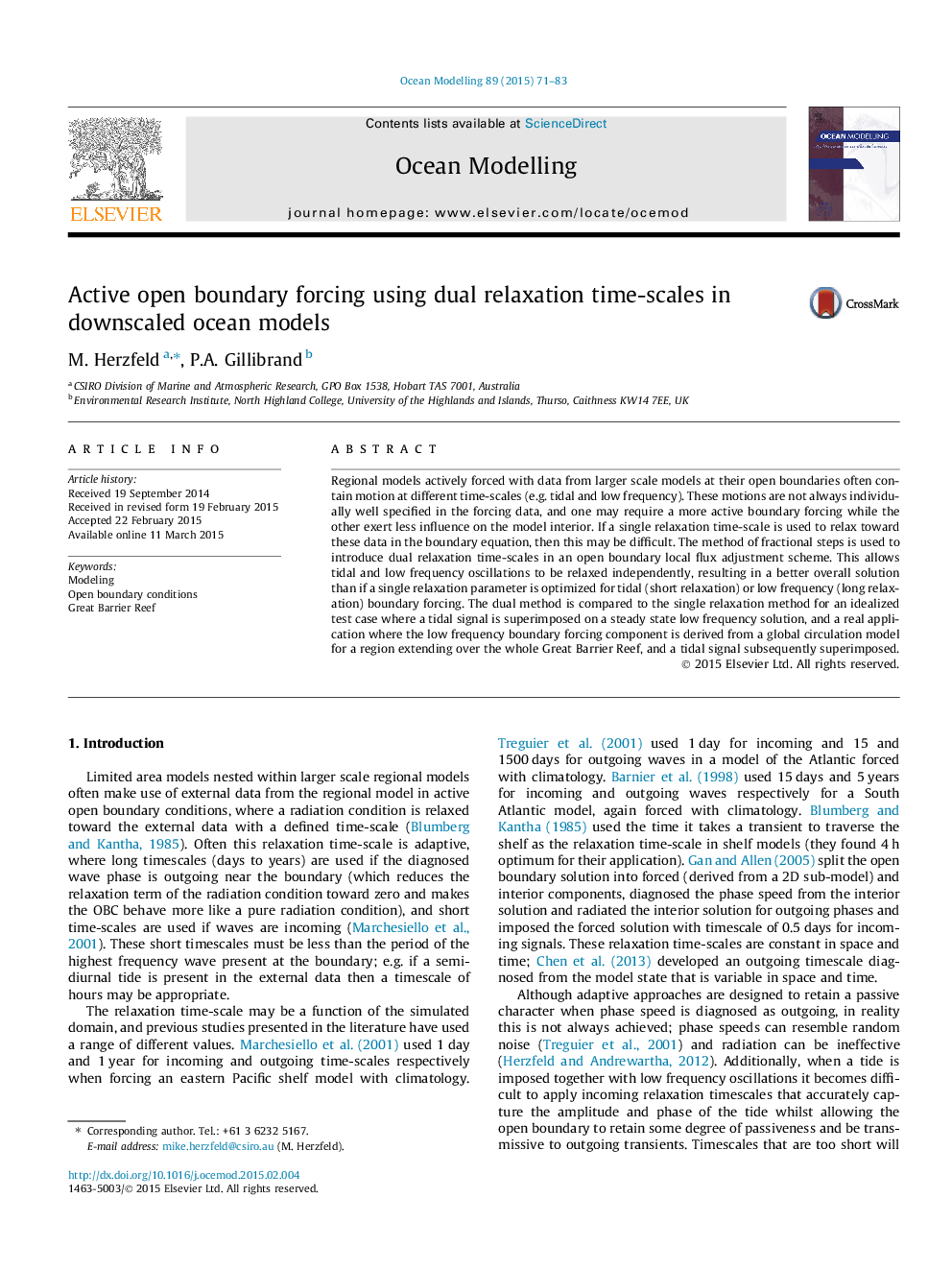| کد مقاله | کد نشریه | سال انتشار | مقاله انگلیسی | نسخه تمام متن |
|---|---|---|---|---|
| 4552039 | 1627759 | 2015 | 13 صفحه PDF | دانلود رایگان |
• Use method of fraction steps to split a Dirichlet OBC to account for tidal and low frequency signals.
• Demonstrate improved tidal and low frequency response in a test domain.
• Demonstrate single relaxation over and under-specification in a real application.
• Demonstrate optimum response using dual relaxation in a real application.
Regional models actively forced with data from larger scale models at their open boundaries often contain motion at different time-scales (e.g. tidal and low frequency). These motions are not always individually well specified in the forcing data, and one may require a more active boundary forcing while the other exert less influence on the model interior. If a single relaxation time-scale is used to relax toward these data in the boundary equation, then this may be difficult. The method of fractional steps is used to introduce dual relaxation time-scales in an open boundary local flux adjustment scheme. This allows tidal and low frequency oscillations to be relaxed independently, resulting in a better overall solution than if a single relaxation parameter is optimized for tidal (short relaxation) or low frequency (long relaxation) boundary forcing. The dual method is compared to the single relaxation method for an idealized test case where a tidal signal is superimposed on a steady state low frequency solution, and a real application where the low frequency boundary forcing component is derived from a global circulation model for a region extending over the whole Great Barrier Reef, and a tidal signal subsequently superimposed.
Journal: Ocean Modelling - Volume 89, May 2015, Pages 71–83
